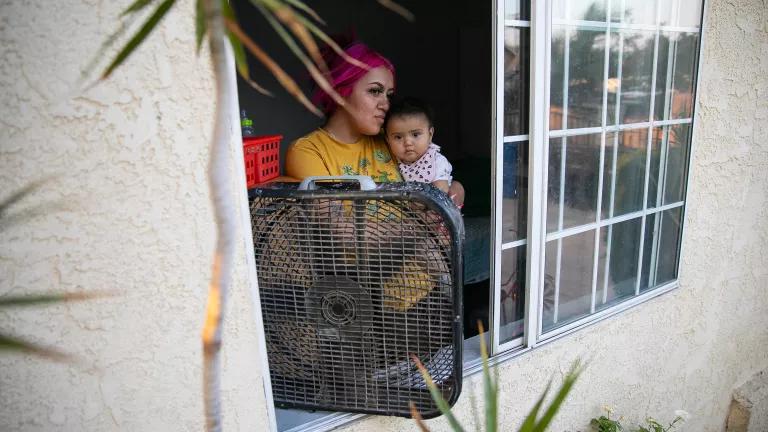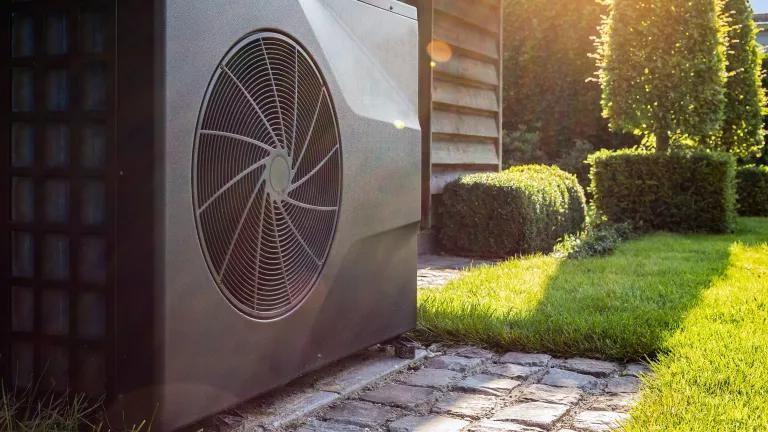CA Building Decarbonization: What’s Coming in 2022?
In recent years, California has been a leader in the global effort to tackle climate change through a transition to clean, safe, and healthy all-electric buildings—but more is needed to meet the state’s fast-approaching climate goals.

Daniel Abadia on Unsplash
California now stands only eight years away from its 2030 climate goal: cutting statewide greenhouse gas (GHG) emissions by at least 40 percent relative to 1990 levels. For the building sector, the single most cost-effective path to decarbonization is transitioning the state’s building stock from gas-fueled appliances to clean and highly-efficient electric appliances powered by California’s increasingly clean electric grid. This transition is already underway—not only in California but across the country. The state has done a lot so far to decarbonize buildings, but we’re just getting started.
Building decarbonization wins to date
California is on a clear path to advancing state climate goals via a transition to highly-efficient electric appliances—a path that has the added benefits of improving safety, affordability, health outcomes, and air quality. Recent measures, including changes to the state building code and equity-focused electrification incentive programs, have laid the groundwork for a transition to clean energy appliances that uplifts all Californians.
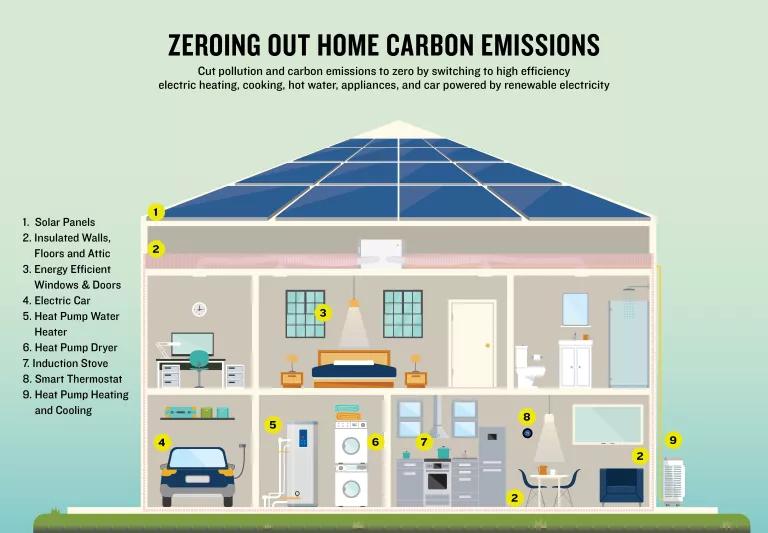
All-electric friendly building code
Last year California adopted a new, electric-friendly statewide building code. Starting in 2023, the new code will strongly encourage builders to opt for all-electric designs that use super-efficient heat pumps for space and water heating. While builders will still be able to use gas appliances in new buildings, they will be required to offset the higher emissions with more efficiency measures. Buildings must also be “all-electric ready”—helping owners avoid costly upgrades down the line as the state transitions to clean, cost-saving electric appliances.
Reach code cities
More than 50 local jurisdictions encouraged the California Energy Commission (CEC) to be bold in the 2023 Building Code by adopting their own electric-friendly “reach codes” to the current code. These “reach code” cities, from Encinitas in San Diego County, to Santa Barbara and San Luis Obispo on the Central Coast, to San Jose and San Francisco in the Bay Area, not only pushed California to reduce its reliance on polluting fossil fuels in buildings, but also led the way for cities as large as New York to make similar climate commitments.
Building decarbonization programs
An array of building decarbonization programs are marshalling state and local resources toward the deployment of clean and efficient electric appliances, especially in low-income and historically disadvantaged communities. According to the California Public Utilities Commission (CPUC), programs under their authority alone are slated to direct approximately $435 million to building electrification over the next four years.

Photo by Daisy Naranjo on Pexels
1. Bay Area Regional Energy Network (BayREN)
BayREN offers a suite of electrification programs for businesses and single- and multi-family homes. Multifamily properties that undergo energy and water efficiency upgrades can earn cash-back rebates of up to $750 per unit; single-family upgrades can earn up to $2000 cash-back for heat pump water and space heater installations, $300 for induction cooktops, and $800 for duct sealing or replacement; and small and medium businesses can earn on HVAC, refrigeration, and lighting upgrades. BayREN's online Home Learning Center also provides multilingual educational and planning resources to help customers transition to electric appliances.
2. San Joaquin Valley Pilots
The San Joaquin Valley Pilot Programs are a $56 million initiative to replace wood and propane appliances in nearly 2,000 homes in the San Joaquin Valley, in most cases with climate-friendly electric appliances. The pilots will retrofit homes in disadvantaged communities at no cost to the participating household, with the aim of reducing participants’ total energy costs. The goal is to demonstrate the feasibility and benefits of efficient electrification to residents, so it can be scaled to all San Joaquin Valley residents currently burdened by high energy costs.
3. Energy Savings Assistance Program
The investor-owned utilities’ (IOU) Energy Saving Assistance Program (ESAP) offers qualifying low-income households the opportunity to perform energy efficiency upgrades at no charge. ESAP incentives can be paired with electrification programs to help customers achieve deeper bill-savings as they transition to all-electric appliances. Additionally, the CPUC recently allocated $51.3 million through ESAP to two Southern California Edison (SCE) building electrification pilots. Both are slated to launch in 2022, with more details below.
4. Affordable Housing and Sustainable Communities (AHSC) program
The AHSC Program is helping expand access to all-electric affordable housing through grants from the California Greenhouse Gas Reduction Fund. Administered by the Strategic Growth Council, AHSC chooses affordable housing projects to fund based on a point system—and, in 2021, the program began awarding points for all-electric designs. As a result, all but one of the thirty-seven projects selected last year received maximum points for electrification. Moreover, nearly all of the applications to AHSC (forty-nine of fifty-three) achieved every possible electrification point. It is time to make all-electric a requirement of the AHSC program, rather than offer points, as the affordable housing market is clearly ready to go all-electric.
5. TECH Clean California
Finally, the TECH Clean California program is a $120 million pilot initiative to achieve market transformation for electric heat pump space and water heating appliances. The package includes a broad set of offerings, ranging from single- and multi-family electrification incentives to workforce and customer education and outreach. TECH also supports six regional pilot programs and eleven Quick Start Grant projects that aim to address key market barriers to efficient and equitable electrification.
TECH incentives and offerings are available today, with at least 40 percent of program benefits directed towards low-income and historically disadvantaged communities. While critically important, the current program funding is just a start. It will take much more to fully transform the market, as the $2 billion California Solar Initiative did for rooftop solar, and California should direct further resources to TECH and similar electrification programs to meet this goal.

Wil Stewart on Unsplash
Looking ahead: What’s in store for 2022
With a landmark budget proposal from the Governor’s Office that commits billions of dollars to climate, the imminent launch of several large-scale building electrification programs, a potential end to gas line extension subsidies, and a proposed goal of 6 million heat pumps in homes by 2030, this is shaping up to be a big year for building electrification. What can Californians who care about an equitable and affordable energy transition look forward to in 2022?
The governor’s budget for clean heat
The Governor’s Budget proposal, released in January 2022, includes nearly $1 billion for equitable building decarbonization efforts over two years—in addition to hundreds of millions for the AHSC Program, the Low-Income Weatherization Program, and other initiatives to improve climate resilience and expand access to sustainable housing across California. The CEC and the California Air Resources Board (CARB) would distribute the equitable building decarbonization funding, which includes:
- $622.4 million to retrofit existing buildings in low-income communities with electric appliances (CEC)
- $300 million to provide consumer rebates for building upgrades, including replacing fossil fuel appliances with electric alternatives (CEC)
- $40 million to accelerate the adoption of more climate-friendly refrigerants (CARB)
This proposed budget will need to be approved by the legislature to move forward.
Building electrification programs launching this year
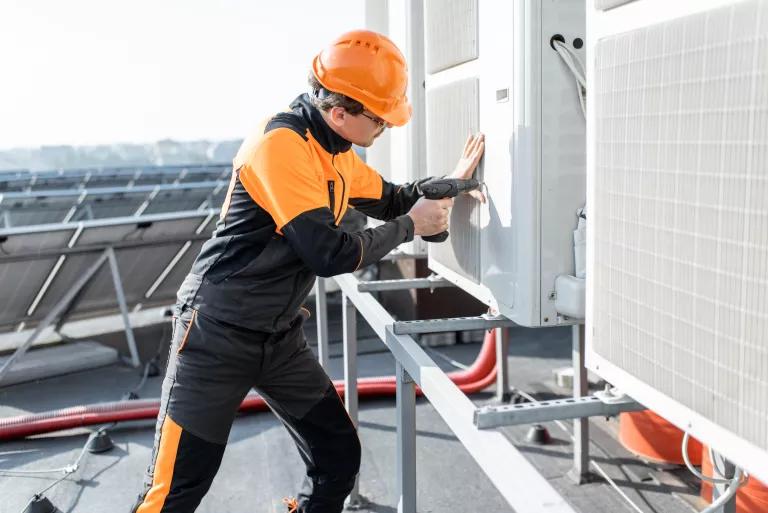
RossHelen on iStock
1. The Building Initiative for Low-Emissions Development (BUILD) program
The long-awaited BUILD Program is slated to launch early this year. The $80 million program will help affordable housing developers with their first all-electric projects by providing incentives and technical assistance for all-electric construction. BUILD “2.0,” a $75 million program focused on market rate construction, is also under development and will promote the use of electric appliances and storage in new buildings through financial and technical support.
2. The Wildfire and Natural Disaster Resiliency Rebuild (WNDRR) program
The recently approved WNDRR Program will enable some of the Californians impacted most deeply by climate change to become a part of the climate solution by transitioning to all-electric homes. The $50 million program will provide flat incentives to homeowners of post-disaster, red-tagged homes who rebuild with all-electric appliances, with incentive rates 1.5 times higher for occupants of low-income or historically disadvantaged communities.
3. The WatterSaver program
WatterSaver is a PG&E initiative to replace electric resistance water heaters with efficient electric heat pump models that have demand response capabilities. The demand response feature will both help balance the electric grid and help customers save money by heating water when the grid has an excess of renewable energy and storing it to use later in the day. The CPUC recently adopted implementation details for the program, which is slated to launch this year.
4. The Self-Generation Incentive Program (SGIP)
The SGIP Heat Pump Water Heater (HPWH) Program, which is nearing adoption at the CPUC, will dedicate $84.7 million to equity-focused residential and commercial HPWH installations. Long in the making, the SGIP HPWH Program is expected to launch this year.
5. Southern California Edison’s (SCE) electrification programs
In 2021, the CPUC approved two SCE Pilot programs under ESAP: the Building Electrification Pilot and the Clean Energy Homes Pilot. The Building Electrification Pilot, which received $40.8 million in funding, aims to electrify nearly 3,000 low-income households in disadvantaged communities in SCE territory. The pilot is expected to launch in August 2022.
The Clean Energy Homes Pilot focuses on all-electric, affordable new construction in SCE territory. It has an approved budget of $10.5 million, and it will enable the development of about 3,800 multifamily and 700 single-family all-electric affordable housing units. The pilot will launch in mid-2022.
Furthermore, SCE recently submitted a much-needed electrification proposal to the CPUC. As written, the proposed program would dedicate $677 million to installing about 250,000 heat pumps in homes and businesses and providing electrical upgrades for 65,000 households, with an emphasis on low-income customers and vulnerable communities. If approved by the CPUC, SCE would begin program implementation in 2023 and begin operations in early 2024.
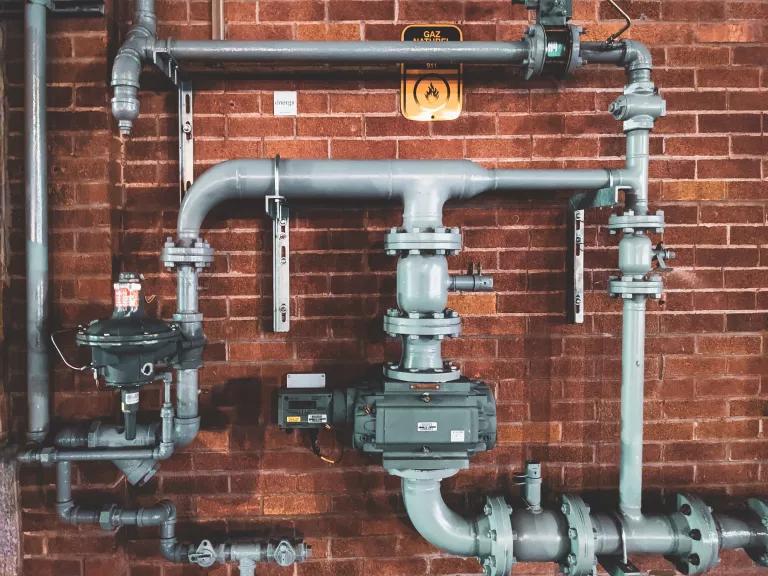
Sigmund on Unsplash
A potential end to gas connection subsidies
The CPUC is also poised to end subsidies for new gas line extensions—a long overdue step that will help end California’s reliance on fossil fuels in buildings. Currently, the state pours more than $100 million each year into new gas connections, which are paid for utilities’ gas customers, regardless of whether they benefit from the subsidies. But a recent Staff Proposal from the CPUC recommends removing the subsidies across all customer classes—a move that even the large gas utilities partially support. If the CPUC adopts the Staff Proposal, subsidies for new gas connections will end beginning in mid-2023.
Proposed goal of 6 million heat pumps in homes
Finally, in February 2022, the CEC approved a recommended goal of 6 million heat pumps in California homes by 2030. This proposed goal represents the ambition required to meet California’s climate targets, and the Legislature or the Governor’s Office should formally establish it via legislation or executive order to help drive California’s building decarbonization efforts.

Lili Popper on Unsplash
It is already clear that 2022 will be a big year for building electrification. The Governor’s groundbreaking budget proposal, combined with policy changes and large-scale incentive programs on the horizon, are the product of years of building decarbonization advocacy coming to fruition. But while this work is critical and important, this is also no time to slow down. Equitably decarbonizing all of California’s buildings—and achieving economy-wide decarbonization—will require much more investment, planning, and effort across all the state’s agencies, stakeholders, and decision-makers. But the programs and policies already underway, and those that will kick off this year, provide a blueprint for the future—and give us hope that we can achieve California’s goal of meaningful climate action in a way that uplifts and benefits all Californians.



